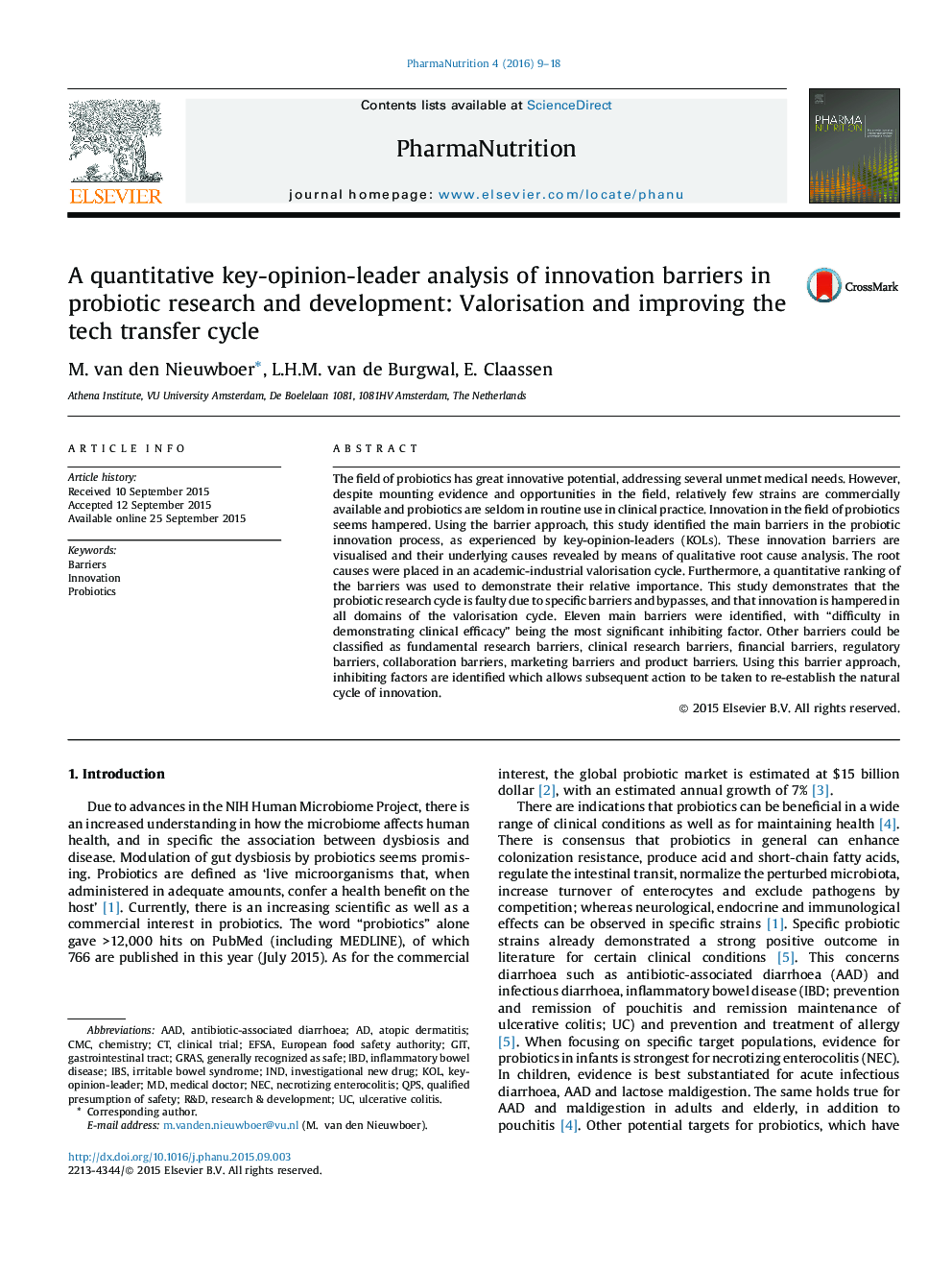| کد مقاله | کد نشریه | سال انتشار | مقاله انگلیسی | نسخه تمام متن |
|---|---|---|---|---|
| 2564404 | 1127970 | 2016 | 10 صفحه PDF | دانلود رایگان |
• Innovation cycle of probiotics is faulty.
• Barriers hampering the innovation process at all domains in the cycle.
• Difficulty in demonstrating clinical efficacy is most important barrier.
• Eleven main barriers were identified.
• Serious efforts are required to restore the natural innovation cycle.
The field of probiotics has great innovative potential, addressing several unmet medical needs. However, despite mounting evidence and opportunities in the field, relatively few strains are commercially available and probiotics are seldom in routine use in clinical practice. Innovation in the field of probiotics seems hampered. Using the barrier approach, this study identified the main barriers in the probiotic innovation process, as experienced by key-opinion-leaders (KOLs). These innovation barriers are visualised and their underlying causes revealed by means of qualitative root cause analysis. The root causes were placed in an academic-industrial valorisation cycle. Furthermore, a quantitative ranking of the barriers was used to demonstrate their relative importance. This study demonstrates that the probiotic research cycle is faulty due to specific barriers and bypasses, and that innovation is hampered in all domains of the valorisation cycle. Eleven main barriers were identified, with “difficulty in demonstrating clinical efficacy” being the most significant inhibiting factor. Other barriers could be classified as fundamental research barriers, clinical research barriers, financial barriers, regulatory barriers, collaboration barriers, marketing barriers and product barriers. Using this barrier approach, inhibiting factors are identified which allows subsequent action to be taken to re-establish the natural cycle of innovation.
Figure optionsDownload as PowerPoint slide
Journal: PharmaNutrition - Volume 4, Issue 1, January 2016, Pages 9–18
